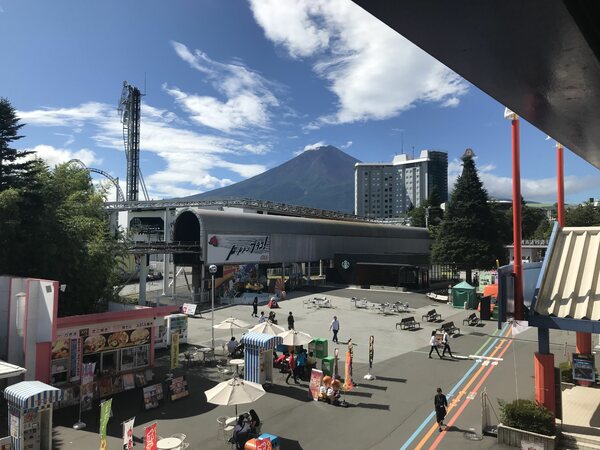Fuji-Q Highland: proof that you can make a theme park out of anything
This weekend I traveled across Japan to climb Mount Fuji, the highest mountain in the country and one of the most beautiful and recognizable mountains in the world. But before starting the climb, three fellow students and I spent a night in Fujiyoshida, Yamanashi to go to Fuji-Q Highland, a Mount Fuji-themed amusement park.
Getting there
Merely getting to Fujiyoshida from our residence outside of Kyoto was quite a journey. Starting at 9:00 we took a bus to the nearest train station, then a local train to Kyoto Station. From Kyoto station we took the Shinkansen (bullet train) to Tokyo station. The Shinkansen is incredibly quiet and comfortable despite travelling up to 320 km/h. Providing fast and convenient transport between major cities without the hassle of airports or the discomfort and frequent stops of other rail lines, the Shinkansen is now my favorite way to travel.
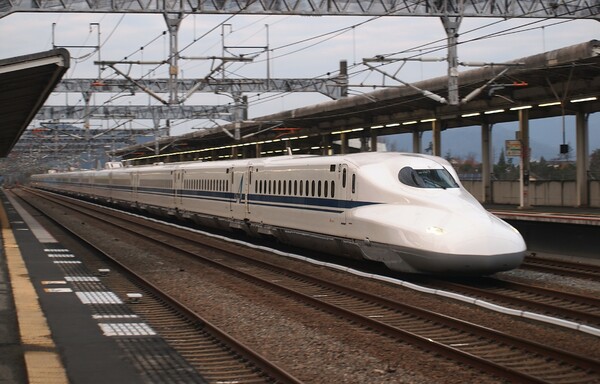
At Tokyo station we grabbed a quick lunch of ramen, then took the Chūō line to Ōtsuki. At Ōtsuki we transferred to the Fujikyuko line, a slow and bumpy local train to Fujikyu Highland. By the time we finally reached our Airbnb it had been almost eight hours of travel on a bus and four different trains.
A theme park based on a mountain
The next morning, September 8th, we set out for the park. The forecast called for rain starting at noon due to the approach of Typhoon Faxai, but we were hoping it wouldn't be as bad as predicted.
We were pleasantly surprised to find that the park wasn't very crowded in the morning, perhaps because of the typhoon. We were able to ride some of the first few coasters with almost no wait time.
The first roller coaster we tried was also my favorite of the day: the Eejanaika (ええじゃないか, a Japanese term that means something like "come on, it's okay"). It's a "4th Dimension Hypercoaster" in which the seats start facing backwards and rotate independently of the cars. It currently holds the world record for most inversions in a roller coaster at 14.
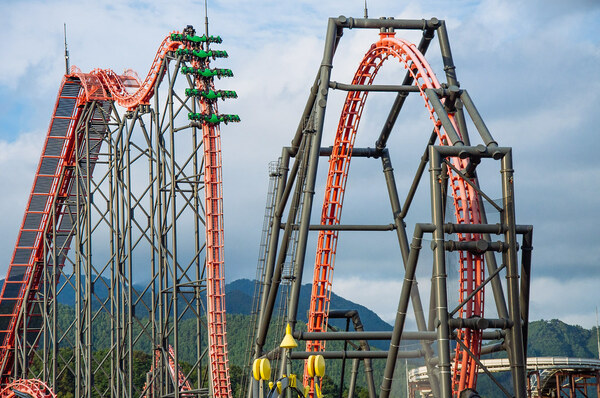
Without a huge media company like Disney or Universal behind it, and lacking the reputation of a well-known company like Six Flags, Fuji-Q has to rely on its rides to drive attendance. This means that their roller coasters are all fun in their own right, and many of them were world record-holders at some point in time.
For example, the next coaster we tried, the Fujiyama, was the tallest roller coaster in the world in 1996 when it opened at 79 meters. It's still among the world's tallest and longest, although it was a bit too jerky and rough for my tastes.
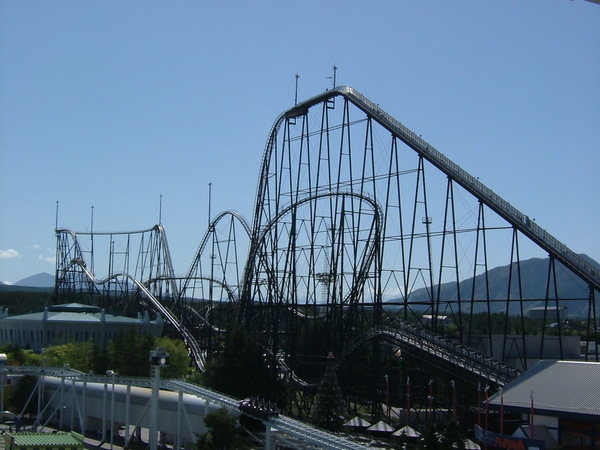
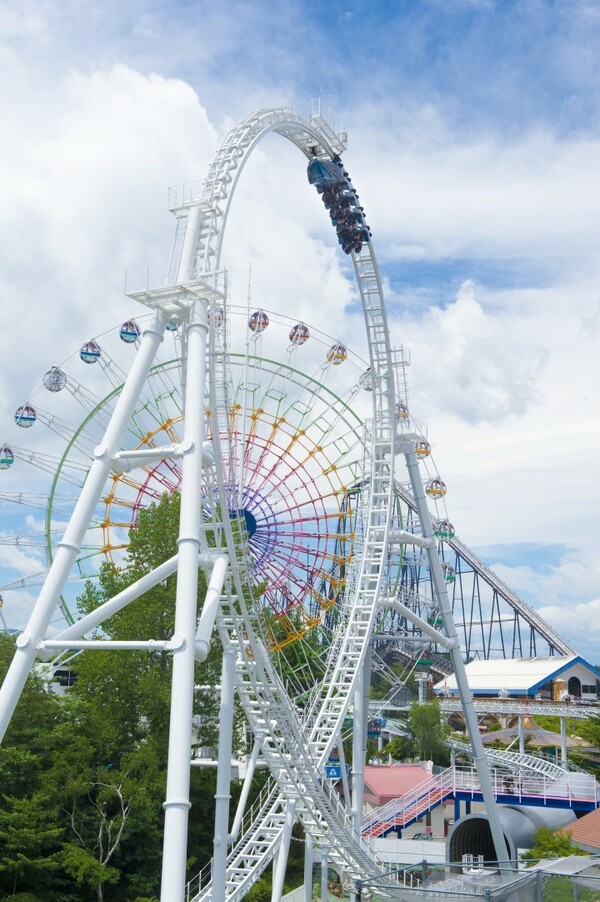
Another record-holder, the Do-Dodonpa (ド・ドドンパ, onomatopoeia for Japanese drums) was the fastest roller coaster in the world when it opened in 2001. Instead of dropping the cars from the top of a big hill, Do-Dodonpa launches you through a tunnel using compressed air. Because of this, it still holds the record for the highest acceleration in the world, accelerating from 0 to 172 km/h in 1.56 seconds.
The downside of this high speed is that the coaster blows through the track too fast. Although the track is over 1200 meters long the ride only lasts a few seconds.
The final record-breaking coaster to experience is the Takabisha (高飛車, the kanji for high, flying, and car, which mean "high-handed" or "domineering" together). This coaster is still the steepest in the world, with a 121° drop angle.
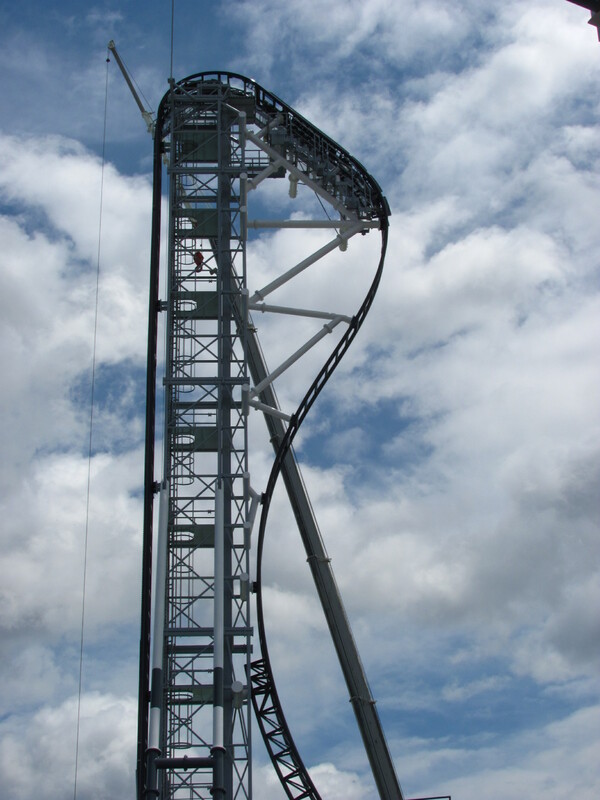
Takabisha starts in complete darkness with a drop and some rolls, then launches into some more complex elements in the open air. The first half of the ride is powered by the initial linear motor launch, until the car comes to a stop halfway through and is pulled straight up a 90° hill. At the top the train pauses for just enough time to anticipate the coming beyond-vertical drop before being released.
Among all the roller coasters, water rides, and other thrills, Takabisha was my second favorite ride of the day.
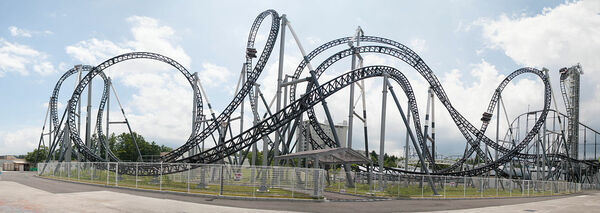
Along with the standard thrill rides, Fuji-Q also has a couple of "haunted" attractions. My group tried the "Super Scary Labyrinth of Fear," apparently the scariest attraction in Japan. It's set up as a haunted abandoned hospital, and the excellent sound and set design actually did spook me a bit.
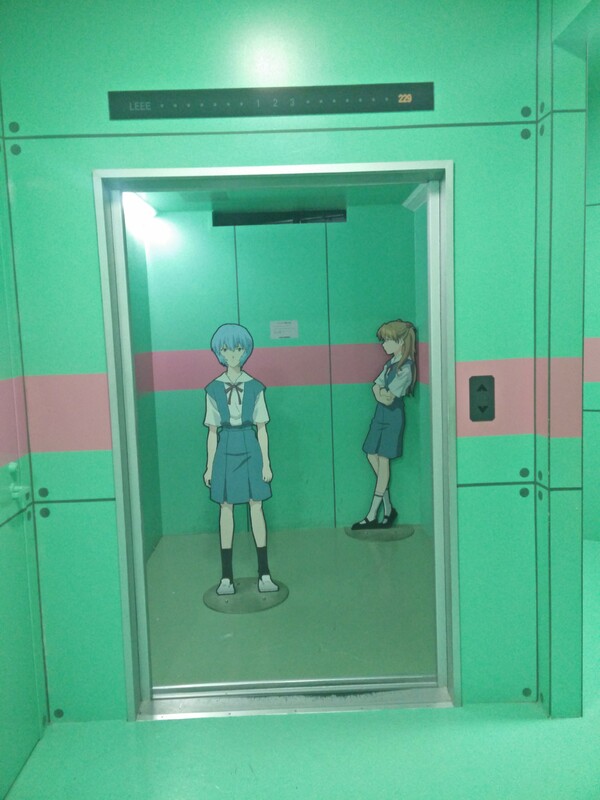
Because this is Japan, Fuji-Q obviously has some anime tie-ins. There was some kind of event related to BanG Dream! going on, as well as an indoor attraction called Evangelion World. Here you could buy Eva-themed merch and see storyboards and concept art from the rebuild movies. It even had life-sized recreations of famous scenes from the show, so you can take a picure playing piano with Kaworu or sharing an awkward elevator ride with Asuka and Rei.
Between all these different tones and moods, the main theme underlying all of Fuji-Q Highland can only be Mount Fuji itself. The mountain's scenic beauty can be seen from almost every point in the park. At the many restaurants and food stalls you can buy any food imaginable shaped like Mount Fuji. They have Mount Fuji popsicles, rice balls, pizza, and even Auntie Anne's pretzels.
Although the rain was later than expected, it did eventually start pouring. But by that point the park was about to close anyway (everything closes weirdly early in Japan), and my group had done all the rides we wanted to get to. We decided to head back to the Airbnb to get some rest and prepare for the 1700 vertical meter climb that awaited us in the morning when we would attempt to hike Mount Fuji.
